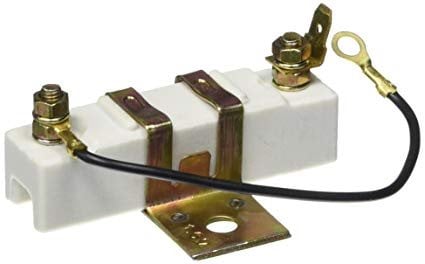So, what’s a ballast resistor actually do?

Look, if you’ve just rolled in from Rototuna or Glenview and you’re trying to figure out what’s crook with your ignition, ballast resistors sound technical but they’re pretty straightforward – old school, but important. These little fellas are usually sitting between your ignition switch and the battery, hooked up to the ignition coil.
Here’s how they work in real life: when you’re just cruising along Peachgrove Road or doing another stop-start shuffle on Ulster Street, the ballast resistor limits how much voltage is heading to your ignition coil. That stops things overheating and doing damage – especially after you’ve been crawling around through traffic by The Base or bouncing over potholes in Te Awamutu.
But, when you go to fire up your car on a cold foggy Pirongia morning, the resistor lets the coil have full whack for a bit – stronger spark for starting, which is exactly what you want when the engine’s a bit grumpy in winter.
Just like anything that sits around heat and power all day, ballast resistors wear out. They cop it from all that start-stop action, hot summers out past Tamahere, or even the moisture rolling in over Hillcrest in winter. If they get dodgy, you might not even get your car started, or it just keeps dying in traffic. Annoying, eh?
If you reckon yours is on the way out, we sort this kind of thing all the time at Grimmer Motors. Our team of technicians see it in all sorts – old Nissan Cedrics, Subaru Legacies, Mazda Bongos, even a few wildcards like Ssangyongs when folk come in from Cambridge or Morrinsville.
Curious about how the whole ignition system works?
Dodgy ballast resistor? Here’s what you’ll notice
You’ll usually spot a crook ignition coil ballast resistor pretty quick with these classic symptoms:
- Misfiring engine: Could be you’re getting a rough idle, or the engine just stutters up Te Rapa Straight when you put your foot down.
- Hard to start (or won’t start at all): Try starting it in the middle of the Hamilton winter, and it just doesn’t want to know you – yeah, could be the ballast resistor.
- Gutsy performance drops: Feels like your Toyota Mark X or VW Passat doesn’t want to go, even when you’ve filled up on the good stuff from BP Dinsdale.
- Check engine light: That little orange light pops up – it’s telling you there’s trouble under the bonnet, could be ignition stuff.
- Weak spark: Seen this a lot in workshop – spark plugs look sluggish, car misses a beat at the lights, especially noticeable in stuff like Honda Odysseys or Suzuki Swifts running around Hamilton East.
Some of these symptoms can turn up for other reasons too, so best get a proper diagnosis. One of our techs can sort that easy and get you back on the road safely – saves you clogging up the side of SH1 waiting for a tow!
Fitting or Replacing Ballast Resistors in Hamilton
If your old ballast resistor’s cooked, don’t muck around. At Grimmer Motors, we’re used to seeing all sorts of car problems, from the classics to random hybrids and euro wagons. Our crew handle new ballast resistor installs and replacements all the time. We’ll check your whole ignition setup – whether it’s spark plugs, battery, or the coils – and get you sorted for Hamilton’s streets.
Getting this fixed is a smart move. Your car’ll kick over smoother, use less fuel, and keep you humming over all those Olivine St speed bumps without a drama. And you’ll stay on top of those WOF hassles before they pop up.
For ignition coil ballast resistor repairs or a new one fitted, flick us a call or pop in.

